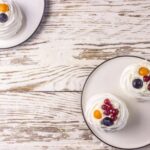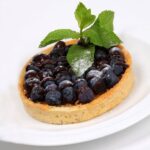Decorating a cake with icing is the ultimate way to elevate its appearance and make it truly special. With just a few simple techniques, you can turn a plain cake into a stunning masterpiece that will impress your guests and leave them wanting more. In this article, we will delve into the world of cake decoration with icing and explore why it is the perfect choice for taking your cakes to the next level.
Icing not only adds a beautiful finishing touch to a cake but also enhances its flavor. Whether you’re working with buttercream, royal icing, or fondant, each type of icing brings its own unique texture and taste to the table. From smooth and creamy buttercream to delicate and intricate designs created with royal icing or fondant, there is an icing style for every taste and occasion.
In addition to enhancing the overall look and taste of a cake, decorating with icing allows you to unleash your creativity. The possibilities are endless when it comes to designing patterns, shapes, and even characters on top of your cake using different colors and consistencies of icing. Whether you are looking to create elegant wedding cakes or playful birthday treats, mastering the art of decorating cakes with icing opens up a whole new world of creative expression.
So, whether you’re a beginner looking for some guidance on how to get started or an experienced baker searching for advanced techniques and trends in cake decoration, this article has got you covered.
In the following sections, we will explore various types of icing, essential tools needed for decorating cakes, step-by-step guides for creating stunning designs, troubleshooting common issues that may arise during the process, tips for unleashing your creativity, as well as ideas for matching icing designs with different occasions.
Get ready to dive into the wonderful world of cake decoration with icing.
The Basics of Icing
Icing is the perfect decoration for cakes because it adds a beautiful finishing touch and enhances the overall taste and appearance. Before you start decorating your cake with icing, it’s important to understand the basics, including the types of icing, color options, and achieving the right consistency.
There are several types of icing that you can choose from, each with its own unique characteristics. Buttercream icing is a popular choice for cake decoration due to its smooth texture and ability to hold intricate designs.
Royal icing is another widely used type of icing, known for its hard finish once it dries, making it suitable for creating detailed decorations. Fondant icing is a versatile option that can be rolled out into a thin layer and draped over the cake, creating a smooth and polished look.
When it comes to colors, there are numerous options available in both pre-made form or by mixing food coloring into white icing. Gel-based colors are preferred by many decorators as they have more intense pigmentation and do not change the consistency of the icing.
Consistency is key when working with icing. Depending on your desired decorating technique, you may need to adjust the consistency of your icing. For piping intricate designs or creating borders, a stiffer consistency is recommended so that your decorations hold their shape. On the other hand, if you’re looking to achieve a smooth and even finish on your cake, a softer consistency will be needed.
| Type of Icing | Characteristics |
|---|---|
| Buttercream | Smooth texture, holds intricate designs |
| Royal | Hard finish when dried, suitable for detailed decorations |
| Fondant | Versatile, can be rolled out and draped over cakes |
Tools of the Trade
Decorating cakes with icing requires the right tools to achieve professional-looking results. Whether you’re a beginner or an experienced baker, having the essential equipment can make a huge difference in the outcome of your cake designs. In this section, we will explore the must-have tools for decorating cakes with icing.
Piping Bags and Tips
One of the most important tools for icing decoration is a piping bag. Piping bags are used to hold and control the flow of icing as you create various designs on your cake. They come in different materials such as disposable plastic and reusable cloth. When choosing a piping bag, consider its durability, ease of use, and whether it can be easily cleaned.
Alongside piping bags, having a variety of tips is essential for creating different patterns and textures on your cakes. Common types of tips include round tips for creating dots or writing, star tips for making swirls or rosettes, and leaf tips for adding foliage-like details. Investing in a set of different sizes and shapes will provide you with more creative options.
Offset Spatulas
Offset spatulas are another crucial tool for cake decoration. These spatulas have a long, narrow blade with an angled handle, allowing you to smoothly spread and level your icing without disrupting the cake’s surface. Offset spatulas are particularly useful when working with layered or tiered cakes as they provide better control and precision.
Turntable
Using a turntable can greatly enhance your icing decoration process by allowing you to rotate the cake while working on it. This helps ensure even application of icing and makes it easier to create smooth and seamless designs. Look for a sturdy turntable that rotates smoothly, has a non-slip base, and offers adjustable height settings.
Bench Scraper
A bench scraper is an often overlooked but incredibly useful tool when it comes to cake decorating. It is a versatile tool that can be used for various purposes such as smoothing icing, creating sharp edges, and removing excess frosting. Opt for a bench scraper with a comfortable grip and a straight edge for precise and clean finishes.
These are just a few of the essential tools you will need to decorate cakes with icing. As you gain experience and explore new techniques, you may find yourself adding more specialized tools to your collection. However, starting with these basics will set you up for success in creating beautiful and professional-looking cake designs.
Step-by-Step Guide
Gather Your Materials and Prepare Your Cake
Before you can begin decorating your cake with icing, it’s important to gather all of the necessary materials and prepare your cake. Start by making sure you have a clean and fully cooled cake to work with. You will also need a turntable or cake stand to help you rotate the cake as you decorate. Additionally, gather your chosen icing colors, piping bags, tips, spatulas, and any other tools you may need for your specific design.
Prepare Your Icing
Once you have all of your materials ready, it’s time to prepare your icing. The type of icing you choose will depend on the desired outcome of your design. For intricate details and fine lines, royal icing is often the best choice as it dries hard and maintains its shape.
For smooth finishes and easy spreading, buttercream icing is a popular option. Take note of the consistency needed for your particular design – icing that is too thick may be difficult to spread or pipe, while icing that is too thin might run off the sides of the cake.
Apply the Base Layer of Icing
To create a clean canvas for your design, start by applying a base layer of icing onto your cake. Using an offset spatula or a butter knife, gently spread a thin layer of icing over the entire surface of the cake. This is known as crumb coating and helps seal in any loose crumbs before adding additional layers or decorations.
Add Decorative Layers
Once the base layer is applied and has set slightly (usually 10-15 minutes), it’s time to add decorative layers or shapes using piping bags or other techniques. If you are new to piping, start with simple designs such as dots or lines before moving on to more complex patterns and textures. Remember to practice patience and take breaks if needed – creating stunning icing designs takes time and practice.
Finishing Touches
After you have completed your desired design, take a step back and assess the overall look of your cake. Make any final adjustments or touch-ups as needed. Pay attention to small details such as smoothing out any rough edges or blending colors seamlessly. Once you are satisfied with your design, allow the icing to set and dry before serving or transporting the cake.
By following this step-by-step guide, you can create stunning icing designs on your cakes with confidence and precision. Remember, practice makes perfect, so don’t be discouraged if your first attempts aren’t flawless. With time and experience, you will develop your own unique style and master the art of decorating cakes with icing.
Choosing the Right Icing Technique
When it comes to decorating cakes with icing, selecting the right technique is key to achieving the desired look. Whether you prefer a neatly piped design or a rustic spreading technique, there are various options available to suit your style. In this section, we will explore different icing techniques and provide tips on how to perfect each one.
One of the most popular icing techniques is piping, which involves using a piping bag fitted with a nozzle to create intricate designs. This method allows for precise control over the flow of icing and can be used to pipe borders, flowers, written messages, and more.
To achieve the best results when piping, it’s important to use the correct consistency of icing – too stiff and it won’t flow smoothly through the nozzle, while too runny and it may lose shape.
If you prefer a simpler approach, spreading icing is a great option. This technique involves using an offset spatula or a butter knife to spread the icing evenly across the cake’s surface. Spreading is particularly useful for achieving smooth finishes or creating textured patterns by using different types of spatulas or combs.
| Icing Technique | Description |
|---|---|
| Piping | Using a piping bag fitted with a nozzle to create intricate designs |
| Spreading | Using an offset spatula or butter knife to spread icing evenly across the cake’s surface |
Unleashing Your Creativity
When it comes to decorating a cake with icing, the possibilities are endless. This section will provide you with tips and tricks to unleash your creativity and make unique and personalized icing designs. Whether you are a beginner or an experienced cake decorator, these ideas will inspire you to create stunning designs that will leave everyone impressed.
One tip for making unique icing designs is to experiment with different piping techniques. Piping allows you to create intricate designs using a piping bag and various nozzle shapes. Try practicing different patterns and shapes such as flowers, rosettes, or even writing words or names on the cake. You can also combine different nozzle sizes and textures to add depth and dimension to your design.
Another way to personalize your icing design is by adding colors and textures. You can use food coloring or gel colors to tint your icing in any shade you desire. Consider incorporating multiple colors in your design for a vibrant and eye-catching effect. You can also play with textures by using different types of tips on your piping bag, such as star tips for creating textured borders or basketweave tips for a woven effect.
Furthermore, don’t be afraid to think outside the box when it comes to inspiration for your icing designs. Look for ideas in nature, art, fashion, or even your favorite hobbies or interests. For example, if you love flowers, try recreating different floral designs using icing. If you are a fan of geometric patterns, try incorporating them into your cake design. The key is to let your imagination run wild and dare to try new things.
Troubleshooting Common Icing Issues
While decorating a cake with icing can be a fun and creative process, it doesn’t always go smoothly. Common issues that can arise include lumps in the icing, air bubbles, and melted icing disasters. However, with a few simple techniques and tricks, you can easily troubleshoot these problems and still create a beautifully decorated cake.
One common issue when working with icing is the formation of lumps. This can happen if the icing has not been properly mixed or if there are clumps of powdered sugar in the mixture. To fix this problem, start by adding a small amount of warm water or milk to the icing and whisking it vigorously until the lumps dissolve. If needed, you can also strain the icing through a fine-mesh sieve to remove any remaining lumps.
Air bubbles are another frustrating issue that can occur when decorating with icing. These bubbles can make your design look uneven and unprofessional. To prevent them from forming, make sure to mix your icing thoroughly before using it. If air bubbles do appear while you’re decorating, gently tap the cake on a flat surface to release the trapped air. Alternatively, you can use a toothpick or small needle to pop any visible bubbles.
Melted icing disasters typically happen when the temperature is too high or when working in hot conditions. It’s important to keep your workspace cool and avoid exposing your cake to direct sunlight or heat sources.
If you notice that your icing is melting or becoming runny while you’re working, place it in the refrigerator for a few minutes to firm up again before continuing with your design. Additionally, consider using buttercream-based icings instead of soft icings like cream cheese frosting for hot weather settings as they tend to hold their shape better.
By following these troubleshooting tips for common icing issues such as lumps, air bubbles, and melted icing disasters, you can overcome these obstacles and create beautifully decorated cakes. Remember to stay patient and practice your techniques, as experience will also play a role in improving your icing skills. With a little bit of practice and creativity, you’ll be able to create stunning cake designs that are sure to impress your friends and family.
Icing Ideas for Every Occasion
Decorating a cake with icing is not only about making it look pretty; it’s also about creating a design that fits perfectly with the occasion. Whether you are celebrating a birthday, a wedding, or any other special event, matching your icing design to the theme can take your cake decoration skills to the next level.
In this section, we will explore various icing ideas for different occasions and provide some tips on how to create stunning designs that will impress your guests.
When it comes to birthday parties, there are endless possibilities for icing designs. For children’s birthdays, consider using vibrant colors and fun shapes like balloons, animals, or their favorite cartoon characters. You can also personalize the cake by piping the birthday boy or girl’s name onto the cake using colorful icing.
Weddings call for elegant and sophisticated icing designs. Consider using delicate details like lace patterns or floral motifs to match the romantic atmosphere of the occasion. Opt for classic colors such as white or pastels and explore techniques like fondant draping or pearlized finishes for a more luxurious look.
For holidays like Christmas or Halloween, you can have even more fun with your icing designs. Create snowflakes, Santa Claus faces, or reindeer motifs in shades of white and red for Christmas cakes. For Halloween, go spooky with black and orange colors and add details like cobwebs or pumpkin faces.
To match your icing design to the theme of an event, make sure to choose appropriate colors, shapes, and techniques that reflect the overall ambiance. Experiment with different piping tips, stencils, molds, and edible decorations to bring your vision to life.
Remember that practice makes perfect when it comes to cake decoration with icing. Don’t be afraid to try new techniques and let your creativity run wild. With time and experience, you will be able to create unique and personalized designs that will amaze everyone who lays eyes on your beautifully decorated cakes.
Beyond the Basics
Once you have mastered the basics of icing and have created stunning designs on your cakes, it’s time to take your cake decoration skills to the next level. In this section, we will explore some advanced techniques and current trends in cake decoration with icing that will elevate your creations to new heights.
One popular advanced technique is using fondant in combination with icing. Fondant is a smooth, pliable icing-like substance that can be rolled out and draped over a cake for a flawless finish. It allows for more intricate detailing and sculpting options that can’t be achieved with traditional buttercream or royal icing alone.
Fondant can be colored, textured, and shaped into various forms like flowers, ribbons, or even figures. By combining fondant accents with piped icing details, you can create truly stunning cakes that are both visually appealing and delicious.
Another trend in cake decoration with icing is the use of edible prints or wafer paper. These thin sheets of edible paper can be printed with any design or pattern and then applied to the cake surface like a decal.
Edible prints add a professional touch to your cakes by allowing you to incorporate intricate designs, logos, or even photographs on the surface of the cake. You can also try using wafer paper to create delicate flowers or feathers which can be attached to the cake using edible glue or royal icing.
Aspiring bakers who want to really push the boundaries of cake decoration may consider experimenting with 3D effects using specialized tools and techniques. One such technique is called sugar pulling or blown sugar, where molten sugar is stretched into thin strands and manipulated into shapes like ribbons or bubbles that can be arranged as decorative elements on top of the cake.
Another technique involves creating edible lace using silicone molds and lace mixtures made from gelatin or flexible gumpaste. These lace decorations look incredibly intricate but are surprisingly easy to make, and they can add an elegant and delicate touch to any cake design.
By incorporating these advanced techniques and staying up-to-date with the latest cake decoration trends, you can continue to push the boundaries of what is possible with icing. Remember, practice makes perfect, so don’t be afraid to experiment and try new things. With dedication, creativity, and a passion for cake decorating, you will soon be able to create show-stopping cakes that will impress everyone who sees them.
Conclusion
In conclusion, mastering the art of decorating cakes with icing is a surefire way to take your cake decorating skills to the next level. With the right knowledge, tools, and techniques, you can create stunning and personalized designs that are sure to impress.
Throughout this article, we have covered the basics of icing, from the various types and colors available to achieving the perfect consistency. We have also discussed the essential equipment needed for cake decoration with icing and provided a step-by-step guide to creating beautiful designs. Additionally, we explored different icing techniques such as piping and spreading and shared tips and tricks for unleashing your creativity.
It is important to note that despite your best efforts, you may encounter some common issues when working with icing. However, armed with troubleshooting techniques outlined in this article, you will be well-prepared to fix lumps, air bubbles, or melted icing disasters.
Furthermore, we have explored how to choose the right icing design for every occasion – from birthday parties to weddings – ensuring that your cake matches the theme perfectly. And if you’re ready to take your skills even further, we have delved into advanced techniques and trends in cake decoration with icing.
Frequently Asked Questions
What kind of icing is best for decorating cakes?
When it comes to decorating cakes, the best kind of icing is typically buttercream icing. Buttercream is a creamy and versatile icing that can be easily colored and piped onto cakes to create various designs.
It has a smooth texture, making it ideal for spreading or piping borders, flowers, and other intricate details on cakes. With its delicious taste and ability to hold shape well, buttercream icing is widely favored by both professional bakers and home decorators for cake embellishment.
How do you get icing to stick to a cake?
Getting icing to stick to a cake requires a few simple steps. Before applying the icing, ensure that the cake has cooled completely so that it doesn’t melt or slide off. Additionally, it helps to slightly moisten the surface of the cake with sugar syrup or a thin layer of jam to create a sticky base for the icing.
This moisture will adhere the icing to the cake and help prevent any air bubbles between them. Once the cake is ready, gently spread or pipe the icing onto its surface, ensuring even coverage while carefully avoiding overworking it to avoid crumbs from lifting up into the frosting.
Can you decorate a cake with Betty Crocker frosting?
Yes, you can certainly decorate a cake with Betty Crocker frosting! Betty Crocker offers a range of pre-made frostings in various flavors like chocolate, vanilla, cream cheese, and more. These frostings are designed with convenience in mind as they come ready-to-use straight from the container.
While they may lack some of the customization options provided by homemade buttercream or royal icings, Betty Crocker frostings offer a convenient solution for quickly decorating your cakes. They can be easily spread onto cakes using an offset spatula or piped using different tips depending on your desired decorative design.

Welcome to my blog about home and family. This blog is a place where I will share my thoughts, ideas, and experiences related to these important topics. I am a stay-at-home mom with two young children. I hope you enjoy reading it! and may find some helpful tips and ideas that will make your home and family life even better!





